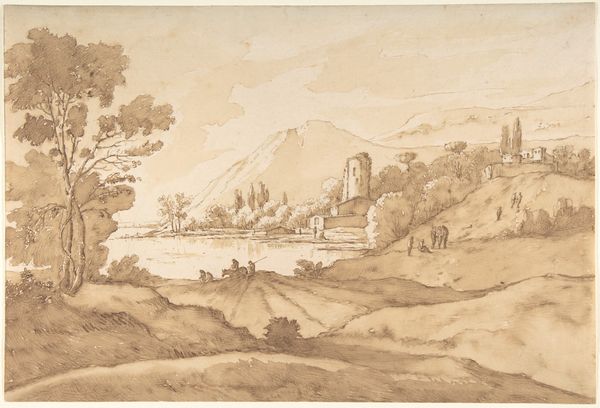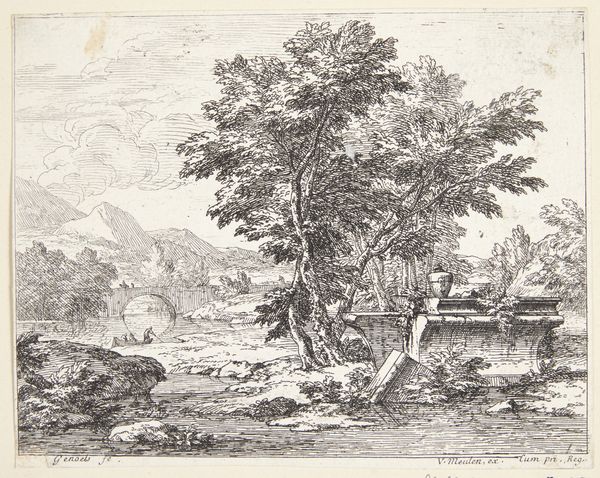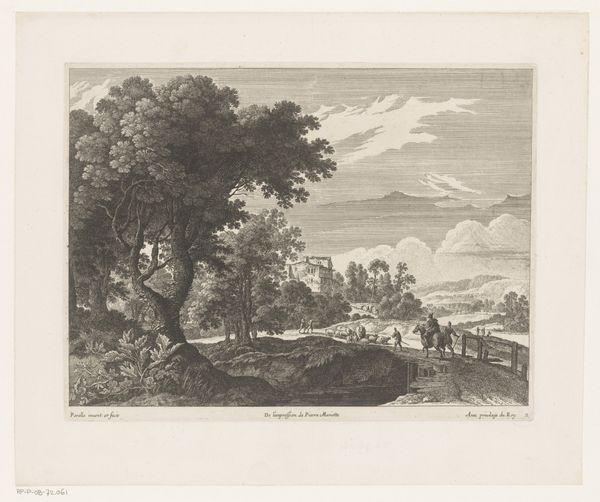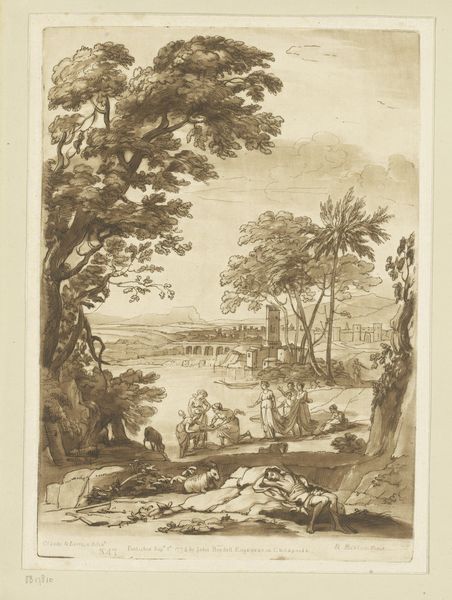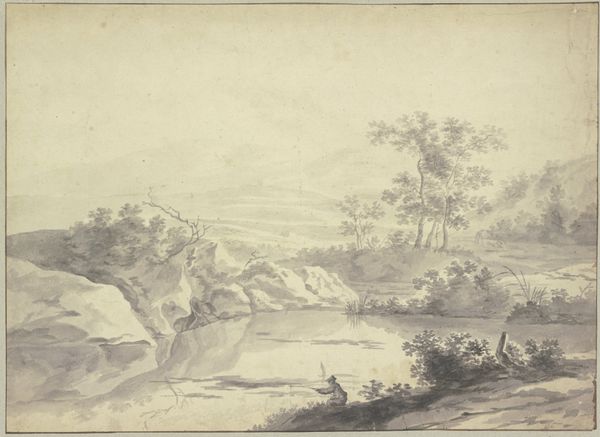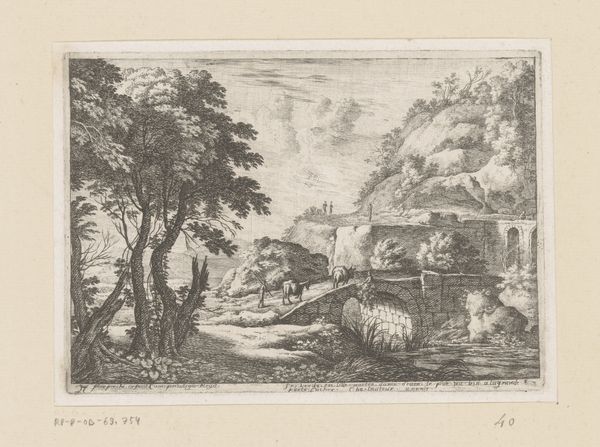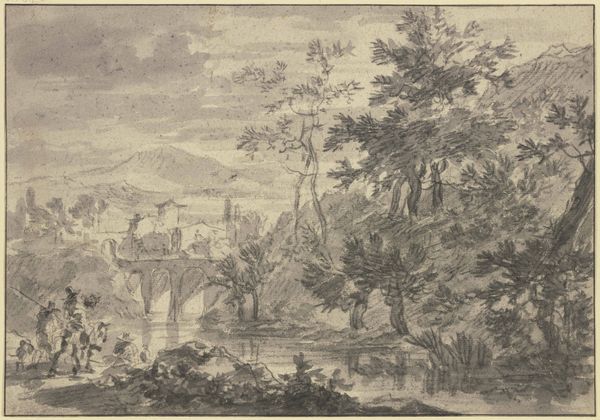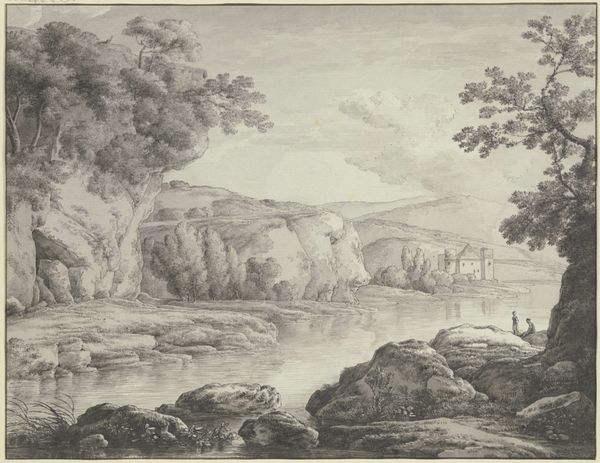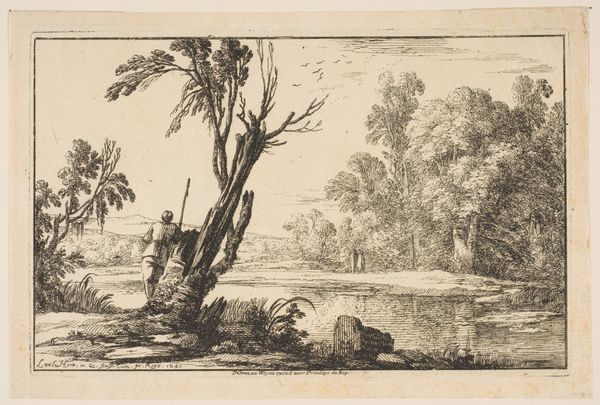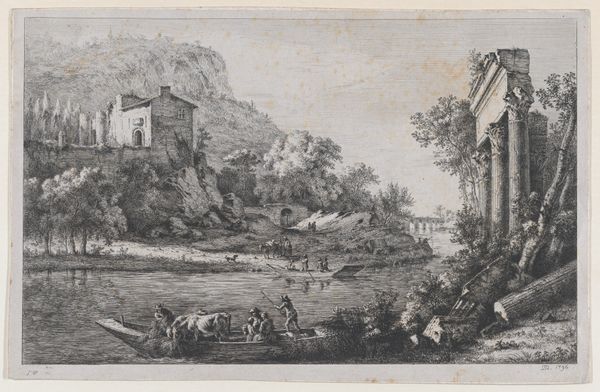
aquatint, drawing, print, etching
#
aquatint
#
drawing
#
ink painting
#
neoclassicism
# print
#
etching
#
landscape
#
coloured pencil
Dimensions: Sheet: 7 11/16 × 10 7/16 in. (19.6 × 26.5 cm) Plate: 6 in. × 8 3/8 in. (15.3 × 21.3 cm)
Copyright: Public Domain
Editor: Here we have Jean Jacques de Boissieu's "Ruins of an Aqueduct" from 1763. It's an aquatint and etching, and my first thought is how serene it feels despite depicting something broken. The water is so still, reflecting the ruins... What draws your eye when you look at it? Curator: You know, that stillness really sings to me, too. It's as if time itself is holding its breath. I see echoes of Piranesi's romanticism, but softened somehow, made more... human. Look at those tiny figures in the boat. Aren't they dwarfed by the weight of history, yet utterly at peace within it? For me, Boissieu seems to be whispering about the enduring power of nature to both reclaim and console. Editor: That's beautiful, "the enduring power of nature..." So it’s not just about decline and decay? Curator: Absolutely not! I think he’s using those crumbling stones to frame a much larger question, inviting us to consider the cycle of rise and fall, destruction and renewal that governs everything. Perhaps even poking fun at our Neoclassical obsession with perfect, pristine antiquity! Don't you think there’s something delightfully subversive about finding beauty in ruins? Editor: It's funny, I never thought about it that way – about finding the beauty instead of just the sadness of the "ruins." Thanks, that gives me a lot to consider. Curator: My pleasure! It's works like this that remind me why I fell in love with art history in the first place – the chance to connect with whispers from the past and feel them resonate in the present.
Comments
No comments
Be the first to comment and join the conversation on the ultimate creative platform.

